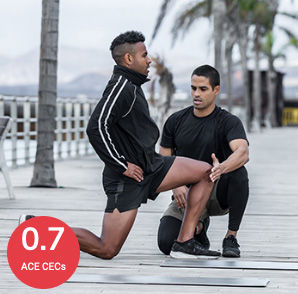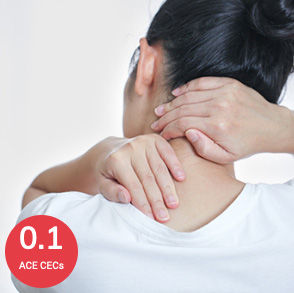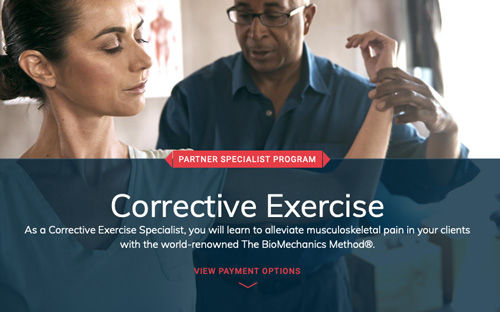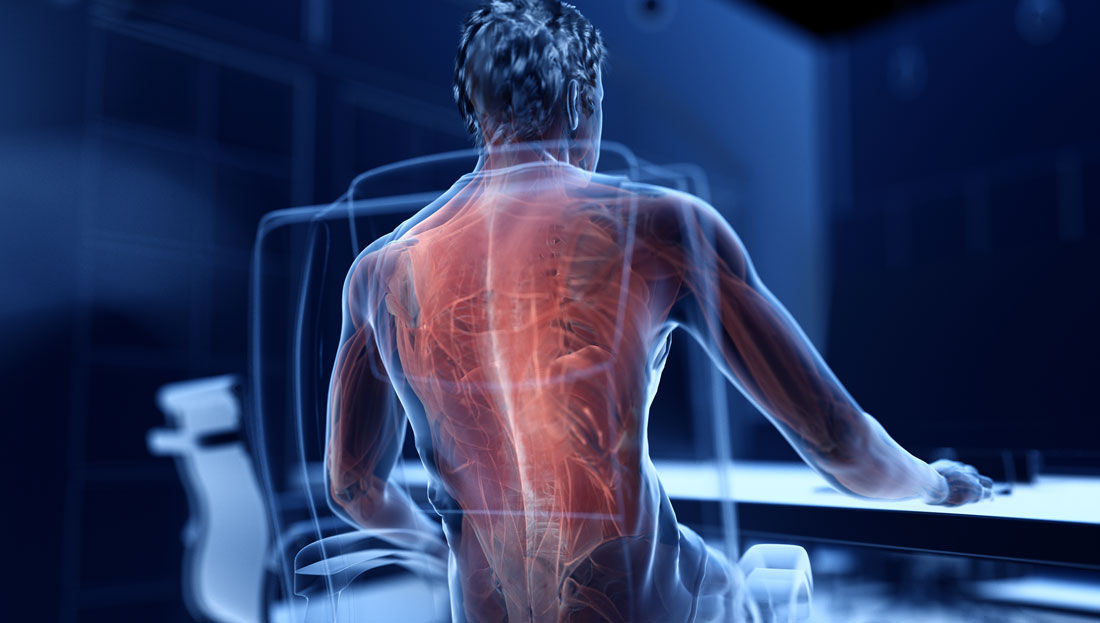
As a health and exercise professional, I often find myself noticing people’s posture, as well as my own. While it can be common for our posture to change as we age, in today’s world of technology, poor posture is becoming more common earlier in life—and its ramifications can, in some cases, be significant.
The lifetime prevalence of low-back pain among adults in industrialized countries is estimated to be 60 to 70%, according to the World Health Organization (WHO). The cause? “Poor posture is one of the main contributing factors that cause neck and back pain,” states Romina Ghassemi, DC, founder of Think Healthy, Inc. and inventor of the BAX-U posture corrector, “as well as being the first indicator of degenerative joint disease.”
“Poor posture can negatively affect the way someone moves,” explains Justin Price, MA, creator of The BioMechanics Method Corrective Exercise Specialist Certification. “Similarly, faulty movement patterns and dysfunctional muscles can cause poor posture. This means that poor posture can be the result of or the cause of a client’s pain and dysfunction.”
While we may associate poor posture with musculoskeletal issues, the consequences of poor posture can extend to other body systems. “Poor posture can cause back and/or neck pain due to the stress put on joints and ligaments, because the surrounding musculature is not able to support the various functions of the back and neck,” explains Caley Crawford, director of education and programming at Row House. “It’s also been known to create gastrointestinal (GI) struggles, because the slouching can lead to the compression of internal organs.”
Derrell Blackburn, DC, senior manager of chiropractic relations and training for The Joint Chiropractic in Phoenix, Ariz., believes that posture is a direct indicator of an individual’s current and future state of health and function. “This may seem far-fetched,” explains Blackburn, “but posture is actually a reflection of our muscle function, spinal structure and flexibility, which are all indicators of our state of health. When we are not aware of proper posture, poor posture may get the best of us. People who have a tendency to slouch or slump while standing, sitting, or even walking, also tend to experience varying health conditions, from headaches and muscle stiffness to more long-term ailments, like decreased respiratory function.”
Blackburn suggests that maintaining good posture not only improves how a person looks and their self-esteem, but also lowers the risk of long-term dysfunction caused by arthritis, abnormal stress on joints and muscle imbalances.
Some of these affects are also immediate. “Slouching can curtail lung capacity by as much as 30%,” warns Joan Pagano, owner of Joan Pagano Fitness in New York City and author of several books, including Strength Training Exercises for Women. “Continued poor posture can result in shallow breathing, causing shortness of breath and general fatigue. Muscle tension and stress also restrict blood flow to the brain.”
Pagano believes that there are psychological effects of posture, as well, and improving posture “could be a key to a better mood, improved memory, increased assertiveness and more resilience to stress.”
For example, a recent study found that those with mild-to-moderate depression often have slumped posture. The researchers believe “that adopting an upright posture may increase positive affect, reduce fatigue, and decrease self-focus in people with mild-to-moderate depression.”
Another study reminds us that the mind-body connection is a two-way street—the body can affect the mind, just as much as the mind can affect the body. When study participants walked slouched over, they said they felt more depressed and had less energy. By contrast, when they walked with better posture, they reported having more energy and a better outlook.
As helpful as technology can be, there are specific issues caused by its use. For example, “tech neck” (also referred to as “text neck”) is caused by the forward and downward movement of the neck from mobile phone use and improper placement of computers. Several studies show a correlation between mobile phone use and neck pain.
Clearly, posture has far-reaching effects on how we feel and move, as well as our health and well-being. Let’s take a closer look at what proper posture is and how you can help your clients achieve it.
A-tten-TION!
When we think of posture, we may initially think of a military-type stance—stand tall, chest out, gut in. And some of this may be desirable—standing tall, core muscles engaged, knees soft and not locked, ears over shoulders, shoulders over hips, hips over knees, knees over ankles.
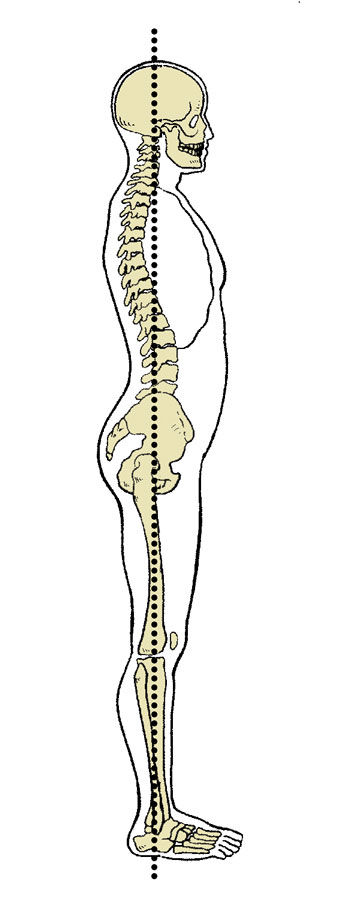
Figure 1. Neutral spine alignment with slight anterior (lordotic) curves at the neck and low back and a posterior (kyphotic) curve in the thoracic region
“Posture is a product of our genetics, skeletal structure, physical development, emotional environment, cultural expectations, and daily and athletic activities,” explains Nora St. John, MS, NCPT, education program director for Balanced Body in Sacramento, Calif. “It is an unconscious expression of who we are and what we do. Posture is the habitual pattern of joint position and muscle tension we spend most of our day in. Because it is our habit, our body adapts to it and this pattern can have a positive or negative effect on how we feel, move and function.”
Jeremy Smith, MD, a spine surgeon with Hoag Orthopedic Institute agrees that posture is often born out of habit. “The spine experiences several positions during the day, and it is easy to take ourselves away from balanced posture. Over time and with bad habit, poor posture can become the norm. The more time we spend with our spines in poor posture positions, the higher the likelihood it will permanently deform and degenerate.” This, explains Smith, “can be related to lifestyle or can be attributed to a musculoskeletal structural abnormality.”
Proper posture is unique to each individual, St. John says. “It represents the positioning of the body in relationship to gravity that creates the least stress and most support for the skeletal structure, while creating the ability to perform daily tasks or athletic activities with comfort and ease. Simply put, proper posture is the most efficient and effective way for that particular body to stand, sit, walk and move.”
Exclusive for ACE Certified Professionals, this
Postural Assessment Checklist is a useful tool to guide your observations when performing basic postural assessments.
Keys to Improving Posture
So, how can we help our clients build and maintain proper posture?
The Importance of Good Sleeping Posture
Since we spend, on average, about one-third of our lives sleeping, sleeping posture is as important as what posture we use while awake. “Try sleeping in a position that supports your natural spinal curves, such as on your side or back,” advises Blackburn. “And use pillows strategically to keep that spine neutral and aligned. For example, for side sleeping, choose a pillow with the same depth as your shoulder so your head is not elevated or depressed, putting [undo] strain on your neck.”

First, says Smith, changing your position every 20 to 30 minutes is a must. “Set your alarm or engage your smartphone or watch to help remind you. If your job or lifestyle requires sitting for most of the day, make sure you have an ergonomic chair that balances your head and torso in a neutral position. If there is an option of a standing workstation, take advantage of it.” Urge your clients to change position from sitting to standing and recognize their posture. “Exercise helps tremendously,” explains Smith, who believes that a balanced program of stretching and strengthening will, over time, “help achieve balance in the muscle groups necessary to maintain and improve posture.”
Which muscles need attention in order to achieve proper posture? “The answer is simple,” says Mark Gugliotti, DPT, MS, associate professor of physical therapy at New York Institute of Technology. “They all do.” Gugliotti explains that normal amounts of opposing force among regional muscles is necessary to simultaneously stabilize one aspect of the body while movement occurs at another. “This is referred to as ‘muscular balance’ and is an ongoing process that occurs instinctively as we move throughout the day.”
Gugliotti says that sometimes, opposing forces are out of balance. “In cases where these opposing forces are not proportionate or equal, a state of ‘muscular imbalance’ occurs. This results in the increased tension and tightness of some muscles, while others demonstrate decreased tension with accompanying weakness. This imbalance is also a main contributor to postural deviations.”
According to Gugliotti, the muscles that tend to be in opposition are (links to recommended exercises are given in parentheses):
“The muscles that tend to become tightened require stretching,” advises Gugliotti, “while the muscles that tend to weaken will require improved endurance and strength.”
“Posture is vital not only to our health, but also overall function,” concludes Blackburn. “Our quality of life is determined by how well we function in the environments we live. And good posture, like any exercise, must be made into a good habit to experience results.”
Exclusive for ACE Certified Professionals, this Daily Routine for Enhancing Low-back Health is a great resource to offer clients to help strengthen the stabilizing musculature of the spine and enhance motor control to ensure that spine stability is maintained in all activities.





 by
by 



